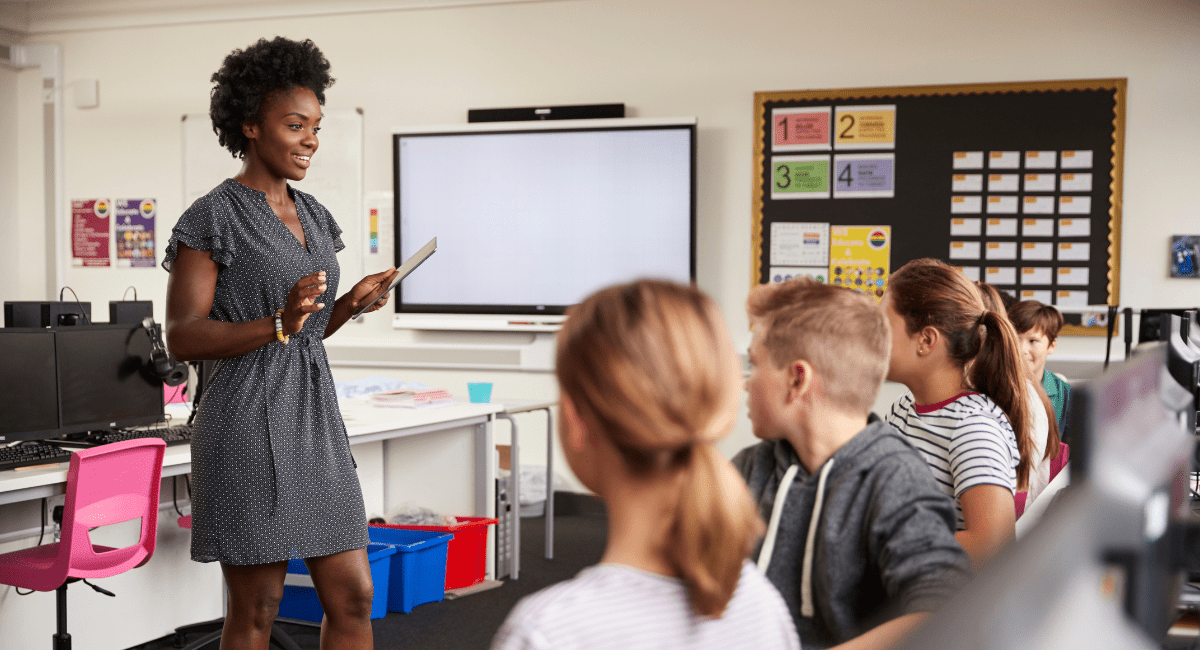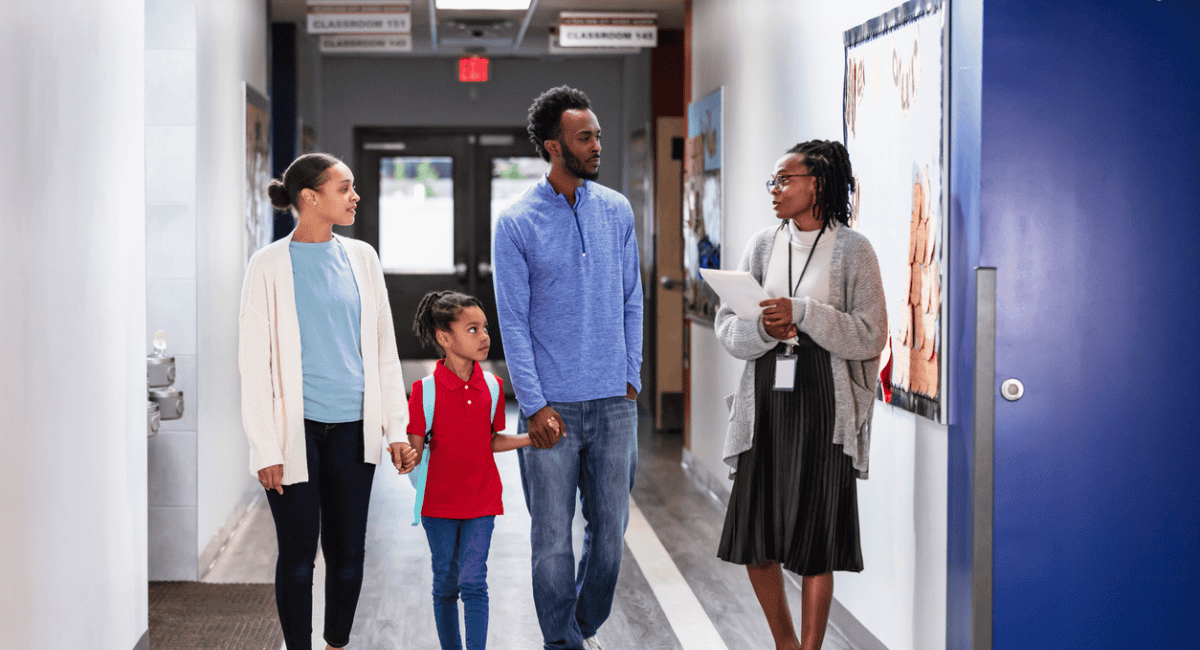In the fourth and final installment of School Pathways’ Independent Study (IS) Essentials Series, we will discuss how to foster student engagement and dive into intervention practices you can utilize if students begin to fall behind.
If you’re looking for the previous posts in the series: part one overviews program-wide structure for Independent Study, part two discusses onboarding students and staff for collective success, and part three dives into curriculum planning and evaluation. Thank you to Dr. Lesley Clifton, Machele Kilgore, J.J. Lewis, Justin Lim, and Dave Meyer for sharing their first-hand experiences in IS and hybrid learning to inform this series.
[ Download The Full Guide Now ]
Challenges of Student Engagement in a Virtual Setting
Maintaining high student engagement is important in any classroom setting, but a virtual learning environment requires that students and educators take it to the next level. According to the Online Learning Consortium, student engagement increases student satisfaction, enhances the motivation to learn, reduces feelings of isolation, and improves student performance in online courses.
It’s no surprise that there are a lot of challenges when it comes to keeping students engaged when they are not physically in the classroom full-time. Since there is less constant oversight from teachers and other school officials, it can be easier for students to become disengaged and fly under the radar if the proper processes are not in place. This is why evolving regulations and recent bills in the last two years—namely California’s AB 130—have specifically addressed requirements for tracking engagement and initiating re-engagement.
Even with these new regulations and laws, they are just a starting point for virtual and IS programs. Schools still need to outline their processes and be deliberate about proactively fueling engagement, tracking engagement to know when students need check-ins/support, and how to follow up and re-engage a learner (thus setting them up for success).
How to Fuel High Engagement Among Independent Study Students
There are many ways to be proactive about keeping students tuned in, having fun, and thriving to avoid disengagement. One avenue is developing multiple channels for supplemental support and learning outside of the core coursework and curriculum. Dave Meyer, Chief Academic Officer at The Classical Academies, shares how his schools developed a new offering known as WIN (What I Need) time. This actually began as a teacher-led project at one specific campus and has spread to other programs based on its success. The schedule for WIN time depends on the school and the student’s schedule. Still, it’s typically a time built into the student’s weekly schedule (sometimes even daily) where the students get to vary their learning based on either the teacher’s recommendation or the student’s selection. So the time can be used for supplemental support. For example: if one teacher is having the highest success with a particular subject, students who might be struggling and are typically with other teachers can report to that teacher to relearn those areas of weakness. Conversely, if a student is already doing well, WIN time can be used to further stretch their learning and provide enrichment through an extra challenge.
Similarly, Compass Charter Schools has developed a Learning Lab program that consists of interactive group sessions led by their instructional staff. J.J. Lewis, Superintendent & CEO at Compass, elaborates that their Learning Labs are conducted via Zoom, asking scholars to have cameras on, and utilizing breakout rooms, as appropriate. Scholars show up to the Learning Lab having learned at their own pace, so it’s not necessarily about rehashing curriculum. It’s about supplementing concepts from a unit and engaging scholars in authentic, live learning by doing different prompts and activities to check for understanding through AVID (Advancement Via Individual Determination) strategies. Lewis explains that options like this ensure that Independent Study and virtual learning don’t feel like a siloed experience. A commitment to communal opportunities and more hands-on learning like this correlates to overall student engagement.
Another avenue to support students and help them stay engaged is offering virtual support as a proactive option for students or families to reach out when they get stuck instead of getting discouraged and dropping off. Classical Academies, for example, is starting a virtual helpline for math in particular. The plan is to have a virtual teacher online during key times of the day and evening so that a parent who might be struggling to teach a specific concept to a student can click the helpline button and launch them into a live Zoom room where they can get immediate help with the task at hand. J.J. Lewis adds that having support outside of typical school hours can also be beneficial since Independent Study and virtual learning naturally means that a substantial portion of learners may complete their coursework in the evenings or over the weekends. Partnering with a third-party tutoring provider can be a good way for programs to offer this type of off-hour support.
Not every engagement tactic has to be a larger-scale initiative. Machele Kilgore, CCIS Co-Executive Director and Alternative Education Principal at Orange County DOE, shares that one simple yet effective strategy is teaching and implementing “Zoom etiquette”. At Kilgore’s program, students must have their cameras turned on while in class unless they have a specified excuse, students are expected to contribute to the discussion if called on, and if students are late more than three times, they may lose grade points or lose the ability to be in that class. Communicating and following this etiquette helps keep students alert for immediate learning success and builds helpful habits for success moving forward in their education journey. As always, it’s also essential to check in with students about how they are accessing their coursework and their understanding of their learning technology (like how even to submit assignments) to resolve any more straightforward practical blockers before they become a sustained issue.
How to Recognize and Surface Unengaged Students
Educators should consistently monitor student engagement levels during the school year so they can recognize when outreach or intervention is needed. It’s important to note that disengagement can take many forms beyond a student simply not showing up for a class or completing an assignment. For example, disengagement can look like a student no longer participating in class by not asking or answering questions or speaking in group settings. Another example could be a student’s scores decreasing over time. Perhaps that’s because they’re not understanding the material even though they’re showing up and putting in the time. Some good indicators that will help you recognize these trends are: how long it takes students to complete a task, whether assignments are being completed at all, if students are making academic progress, and whether the camera is often turned off during virtual sessions. If you start to notice that any students are falling behind in one or several of these categories, it is typically time to intervene.
Software solutions can be especially helpful in tracking student engagement and surfacing disengagement. For example, School Pathways’ Personalized Learning System (PLS) provides a centralized database of student engagement and activity data for teachers, including completed assignments, time spent in an LMS, synchronous instruction occurrences, and live interactions. An at-a-glance roster view makes it easy for teachers to determine which students are actively progressing and which are tuned out and need more assistance in the class. PLS also automatically populates a Tiered Reengagement List based on criteria from recent trailer bills. This view includes an outline of re-engagement steps to be followed once a student is added. Teachers can even send re-engagement emails directly through the platform to alert families and students of missed work and lack of engagement.
Effective Re-engagement and Intervention Practices
The first core principle of effective re-engagement is clear communication. It’s important to ensure students and families understand the accountability systems that are in place long before any related triggers get pulled. Dr. Lesley Clifton, Principal at Escondido Charter and CCIS Co-Executive Director, explains that her program shares a Google spreadsheet with parents to give them access to everything they need to know about their student’s progress, the potential types of notifications they might receive throughout the school year and what each would mean. When guardians are familiar with the steps in tiered-reengagement before anything comes up, it helps them register the call-to-action down the line. Dave Meyer at Classical Academies emphasizes that the parent communication piece is especially vital for younger students because of their more prominent role in facilitating learning. He explains that schools need to actively listen to and support those at-home care providers to make sure they, in turn, can support the students in getting re-engaged.
Along this line, Justin Lim, Online Learning Teacher on Special Assignment (TOSA) at El Monte Union High School District, makes sure to impart the value of empathy and personalized care in communications. Understandably, teachers themselves have hard days, and it can sometimes feel frustrating when dealing with a student or family who has been unresponsive. Lim says it’s important to remember that many students have found themselves in Independent Study because they come from families of high need. They’ve often had negative experiences with schools and teachers in the past, which may contribute to current resistance and hesitation. That’s why it’s extra important that any outreach conducted to unengaged students needs to fulfill a high level of trust, positive intent, and empathy – giving students and families the benefit of the doubt and fostering the best possible scenario to promote re-engagement and not alienation. Nothing exists in a vacuum when it comes to education, especially not virtual and hybrid learning, so approaching intervention practices from a holistic view will always be a benefit.
Schools can further support students by using a multi-tiered system of support, also known as MTSS. A multi-tiered system of support is “a framework with a tiered infrastructure that uses data to help match academic and social-emotional behavior assessment and instructional resources to each and every student’s needs.” Every school can create its own components for the MTSS framework. Tiered Reenagment mandated by AB 130 addressed one level of engagement tracking and a starter outreach plan. Still, many schools and districts are beginning to implement MTSS in their programs because it addresses the needs of a wide variety of students and recommends outreach on a more granular level. The goal is to ensure that no one will be left behind if they are struggling to adjust to an IS program. Lower stages of interventions might include email outreach or a quick phone call checking in and prompting the student to update their activity or jump back in. A middle level might be setting an individual plan for improvement and a parent conference. In more extreme cases where interventions don’t lead to improvement, schools may need to reassess if Independent Study is the right fit for learning or if the student might do better in a different setting.
When it comes to planning those specific interventions, Kilgore illuminates that her program conducts weekly staff meetings where teachers discuss student trends, what engagement levels they’re seeing, and what they can do to accommodate any current issues. In addition to staff meetings, they will also hold specific student intervention team meetings for any disengaged learners. During this meeting, the staff develops a personalized action plan to help the student in that unique moment. A meeting with the student then occurs where educators relay the plan, provide any new accommodations, and set up later evaluations to track improvement over a set period of time.
J.J. Lewis, Superintendent & CEO of Compass Charter Schools, also explains how Compass brought additional tutors on staff to support the three tiers of MTSS. He notes that while working with third-party tutors is an option and may be the best course depending on a school’s resources, having tutors be on staff adds an extra level of personalization and relationship building. Compass now has an Academic Support Department, with a number of staff who support scholars within the MTSS framework.
Justin Lim also encourages using SMART Goals, where educators set specific, measurable, attainable, relevant, and time-sensitive goals. The benefits of this practice are that teachers can assess progress, adjust their efforts for each student, and decide to give more or less autonomy based on individual student engagement and needs. Lim also makes the goal setting a collaborative process with the student, so the student walks away really feeling like the goal is a match. Having that initial buy-in from the student on a goal that meets all the SMART qualifications will better ensure follow through and act like a domino effect starting the path toward improvement.
Final Takeaways
Maintaining student engagement throughout the school year can be difficult, but it is all made possible if you break it down into individual factors. Knowing the right time to intervene and how to best do so is especially crucial to a student’s success. So when going about re-engagement, make sure that students, families, and staff are communicating with a mutual understanding and know the proper steps to take.
Thank you for reading the final installment of our Independent Study Essentials series. Throughout this journey, we have covered the process of outlining your IS program, onboarding students and staff for success in virtual learning, curriculum planning and assessment, and best practices for student engagement and intervention. A full downloadable version will also be available later this fall.
You can also download the full eBook in one place.
If you’d like help problem solving or you’re interested in learning more about School Pathways’ unique solution for Independent Study documentation and compliance—we would love to chat!





